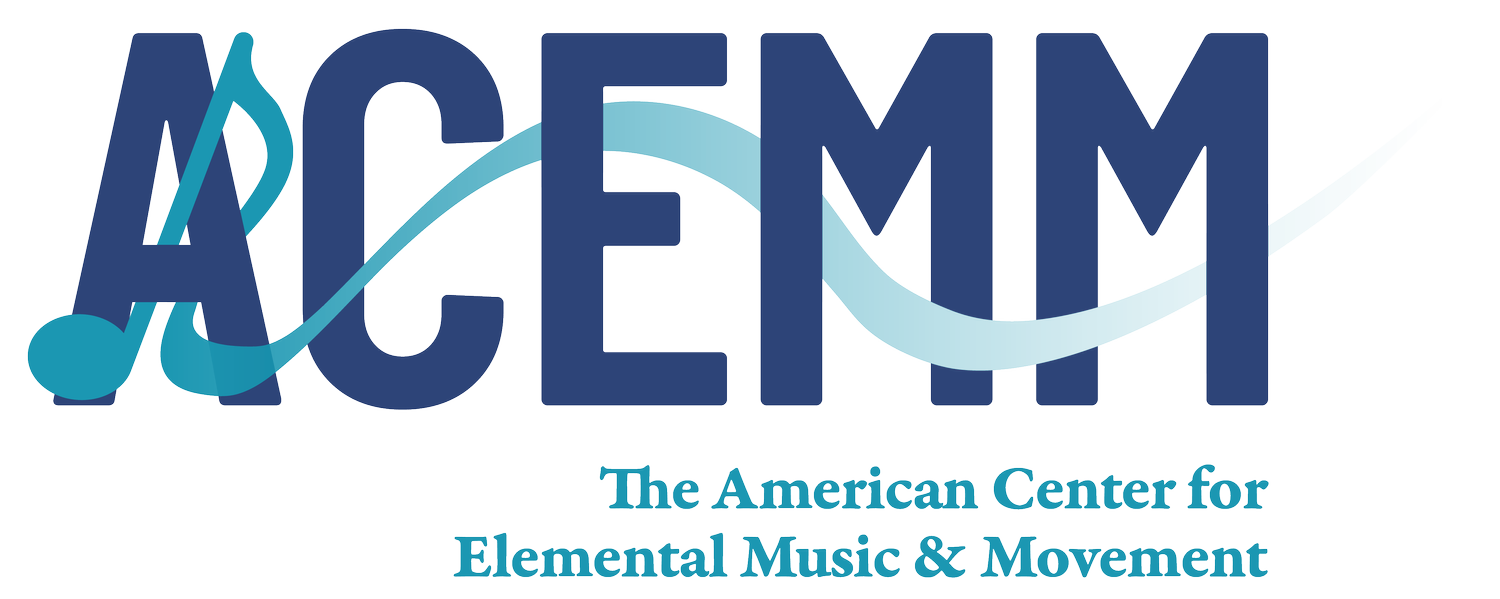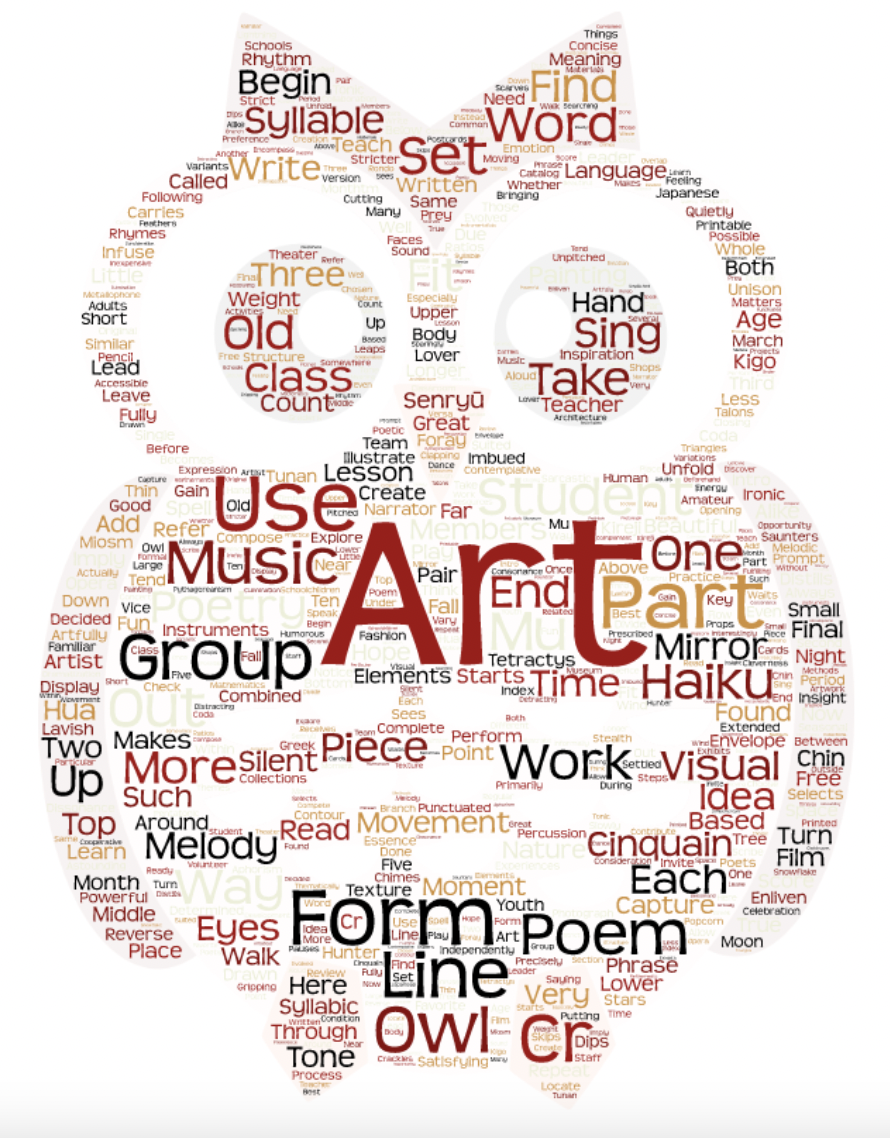Music, Poetry and Visual Art: Complementary Inspiration Sources
By ACEMM Treasurer David Thaxton
Whether it is the lavish experiences of opera combining theater, art, and music, or the powerful emotion imbued into a film with an artfully written score, the Arts enliven each other in astounding ways when they are combined. So I have found it to be with three of my own favorite complementary art forms: Music, Poetry and Visual Art.
As a lover of language, I have always been drawn to poetry, for it is an expression that distills language down to its very essence. Poems are concise. Each word and line carries weight, tone, texture and meaning – often more than just one. Rhymes imply satisfying music, syllables spell out punctuated rhythms. Short forms capture a moment in time like a photograph, or rather, a painting.
Visual art captures the same elements: tone, weight, line, texture and meaning. The prompt “take your eyes for a walk around the painting” makes for a beautiful and contemplative way to take in the art for any age. This is precisely the starting point of a lesson that starts with visual art, saunters through poetry, and ends with music.
Here are three ideas for using Music, Poetry, and Visual Art with students, especially in the month of March, in celebration of both Youth Art MonthTM and Music in Our Schools Month® (MIOSM®). It is my hope that you find inspiration for ways to infuse these art forms with your own students.
Here is a free printable for use with your own students to create and compose using Haiku.
Part One: The set piece “There was an Owl”
This little piece based on an old aphorism makes for a beautiful foray into dissonance, consonance and the contemplative nature of owls.
Teach the piece phrase by phrase beginning with the unison A all the way through – primarily to learn the words. Play the Metallophone chimes between teacher and student turns.
Teach the top line in similar fashion, but add hand or whole body movement that illustrates the melodic contour.
Find a student leader (or pair of leaders) who can sing the upper melody independently, and have them lead the class while you quietly sing the lower part. (Leave out the middle part for now)
Repeat, bringing more students up to sing the lower part with you as part of your “team.”
As the class becomes able to sing the top and bottom parts independently, repeat the above process with the middle part.
This may take more than one class period. It does not need to be fully completed before moving on to other elements of the lesson.
Part Two: Syllabic Poetry
This is a great opportunity to check in with classroom or language arts teachers as a point of possible collaboration and to gain insight into what your students have learned so far in those classes.
Haiku / Senryū
The most familiar syllabic poetry form is the Haiku. The good old “5-7-5” is accessible to schoolchildren and amateur adults alike. However, the original Japanese form is stricter than one might think. A true Japanese haiku has to have a seasonal reference or setting called “kigo,” a “turn” or “cutting word” called “kireji” somewhere near the end of the second line and the beginning of the third line, and must also be about capturing a single moment of time in nature. Interestingly, the syllable count matters the least. Senryū, on the other hand are less strict. They tend to be more about the human condition and can be humorous, sarcastic or ironic. Most “haiku” written for fun or cleverness are actually Senryū.
The moon in his talons
As snowflake stars fall silent
The hunter sees all
Cinquain
An old form that used to refer to any five-line poem, the cinquain has evolved due to inspiration from haiku poets to encompass some of its elements. The syllable count of a cinquain is 2/4/6/8/2, with variations such as a reverse (2/8/6/4/2) and mirror (2/4/6/8/2/2/8/6/4/2). Cinquains unfold very musically with opening and closing lines of two syllables like an intro and coda.
Tetractys
This is a form based on the Greek idea of the ratios found in triangles (Pythagoreanism) and then extended to mathematics, architecture and even music. The syllables are 1/2/3/4/10. Reverse (10/4/3/2/1) and mirror (1/2/3/4/10/10/4/3/2/1) are also common variants.
The mirror tetractys and cinquain are longer forms, well suited to extended practice with students working with syllabic poetry, or for use in longer musical structures such as “There Was an Owl.”
“Night Owl” by Hua Tunan
Working within a form:
Display a work of art such as “Night Owl” by artist Hua Tunan.
Invite students to “Take their eyes for a walk” around the painting, and silently catalog things they notice.
Review methods of determining syllables: clapping sound of words, putting hands below chin and feeling how many times the chin dips when saying a word.
Collectively volunteer or “popcorn out” words and phrases of the prescribed syllable counts (for this particular lesson, use either a mirror tetractys or mirror cinquain)
When the final version of the poem is settled on, the ten lines can be fitted into the structure of “There Was an Owl.”
Example:
The owl
Faces the wind
Gripping the thin tree branch
With his determined energy
He waits
Lightning crackles through his feathers
Eyes searching for his prey
A stealth hunter
Silent
Part 3: Small group exploration and creation
Prepare materials: Find and locate several works of art. These can be thematically related, or not. Place the printed art in a large envelope with index cards and a pencil. Museum shops are great resources for inexpensive postcards of their collections and exhibits.
6th graders working out a haiku & melody
Divide into student-selected groups based on their preference of the following three activities:
Write a poem and use it to compose a melody on pitched percussion instruments (best set up in pentatonic)
Write a poem to be read aloud as group members use unpitched percussion to illustrate
Write a poem to be read as group members perform a movement or dramatization
6th graders working out a haiku & melody
Each group receives an envelope (artwork may be displayed on the outside of the envelope for groups to choose from) and begins cooperative work.
Each group selects a scribe to write the poem
A poetic form is decided on (or may be decided by the teacher beforehand)
Group members contribute ideas to create a final poem to be worked with musically
The music and movement development takes the following refinements under consideration:
Melody Groups MU:Cr1.1.5a,b:
Does the rhythm fit the natural flow of the words?
Does the melody have more steps and skips instead of leaps?
Does the melody begin and end on the tonic?
Unpitched Groups MU:Cr2.1.5a:
Are the instruments used sparingly, punctuating key moments?
Are the instruments chosen for timbres that complement the poem rather than compete with it?
Are the instrumentalists making space for the narrator to speak, and vice versa?
Movement Groups MU:Cr2.1.5a:
Is the dance done in silence during the narration?
Are there scarves or other props that can be used without detracting or distracting from the performance?
Is the narrator reading slowly and/or with regular pauses to allow for the movement to unfold artistically?
Part 4: Culmination MU:Cr3.1.5
Once all the small group projects are complete, practiced and ready, it is time to fit them into rondo form with the set piece as the A section and perform either informally for another class, staff members, or in a formal concert.
The forms, themes and set pieces may vary, but it is my hope that you and your students will find this way to explore visual art, poetry and music to be satisfying and fulfilling as they discover that the space where different art forms overlap can be a beautiful place.
David Thaxton teaches PK-6 music in Reno, NV. He presents workshops nationally and is the Orff Level I Basic Instructor at the University of Nevada, Reno and at the San Diego Orff Course. He was awarded the ACEMM “Spotlight Educator” for Winter 2017, and serves on the AOSA Reverberations Editorial Board.







